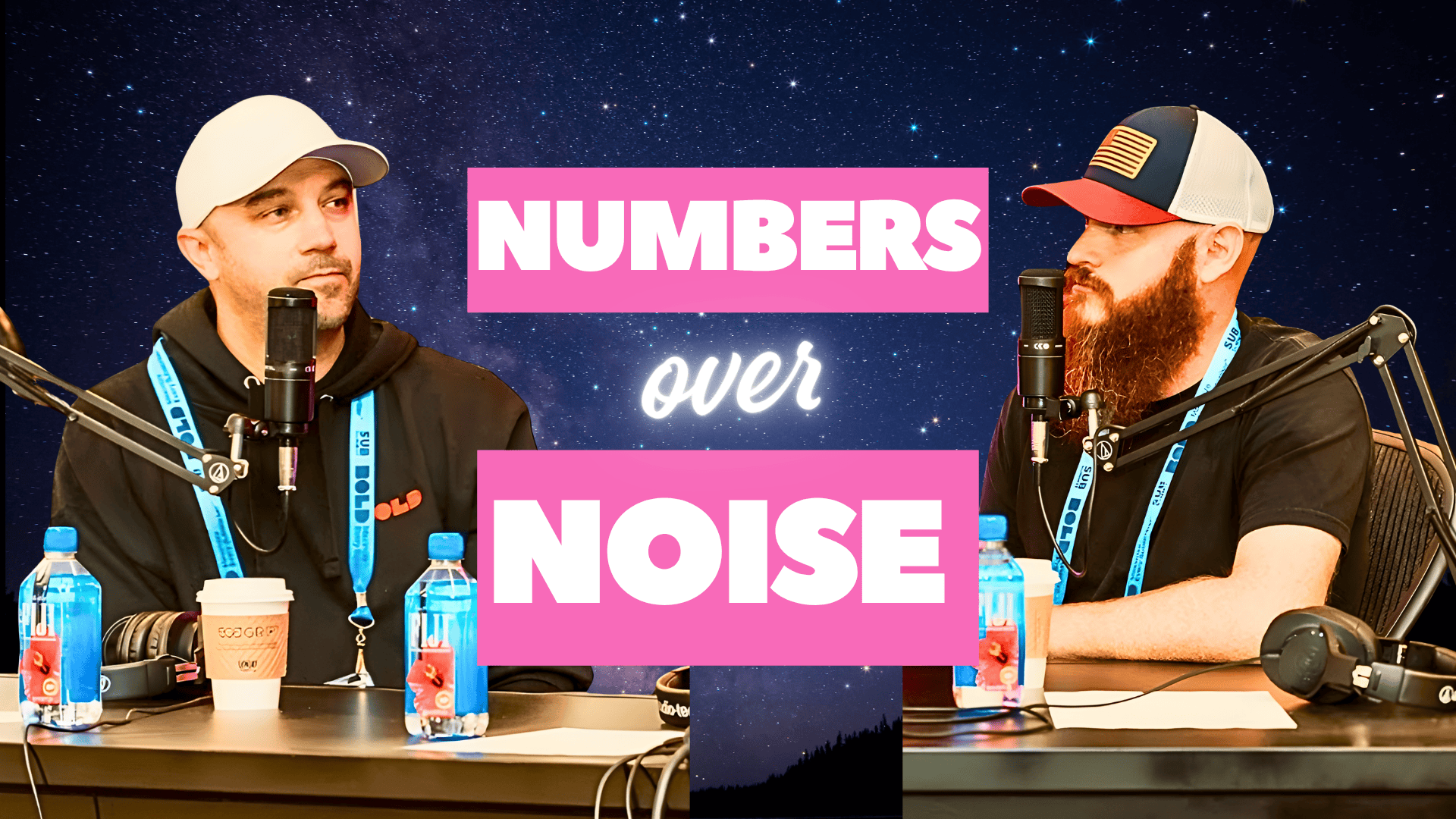Numbers Over Noise: How to Build a Smarter, More Profitable Shopify Business

If there’s one thing I learned after sitting down with Marc Rodill, it’s this: most Shopify growth problems aren’t marketing problems—they’re math problems wearing sequins. We love to talk about ads, branding, and “community,” but at the end of the day, your profit margins and repeat purchase rate don’t care how pretty your logo looks.
Marc has spent years behind the curtain helping Shopify brands untangle their data and rebuild for profit. He’s not the “let’s run one more A/B test on button color” kind of guy. He’s the “what’s your contribution margin after ad spend?” guy. And let’s be honest—Shopify merchants need more of that.
The Numbers Don’t Lie
Let’s start with the reality check. The average ecommerce conversion rate sits at around 2.5%. That means 97 out of every 100 visitors leave your store empty-handed. And even when they do add something to their cart, roughly 70% abandon it before checkout. It’s like throwing a party and watching everyone grab snacks and walk out before dessert.
Now, here’s the kicker: according to Bain & Company, increasing customer retention by just 5% can boost profits by 25% to 95%. Yet most Shopify merchants are still fixated on top-of-funnel ad spend instead of fixing the sieve at the bottom of the funnel.
The “Drunk Uncle Test”
Marc shared one of my favorite concepts in the episode: the “drunk uncle test.” It’s simple—if your drunk uncle can’t navigate your Shopify site and successfully buy something, it’s too complicated. Forget the fancy animations and five-step cart flows. The goal is frictionless simplicity.
We laughed about it, but the truth is most stores fail this test. Every extra click, confusing size chart, or hidden shipping policy adds friction that kills conversion. And when you’re fighting for every percentage point in conversion rate, removing friction is pure profit.
Stack Trust Like a Pro
Trust is currency in ecommerce. Marc and I dug into the idea of “trust stacking”—building credibility at every step of the customer journey. From the moment someone sees your ad, they should feel like they’re in good hands.
That means:
-
Use social proof early (real customer photos beat glossy studio shots every time).
-
Show transparent policies (shipping, returns, guarantees).
-
Use clear, conversational copy instead of jargon.
When customers trust you, they spend more and come back more often. It’s that simple.
Speak Like Your Customer
Another big takeaway: stop writing like a marketer and start writing like your customer talks. Marc calls this “voice mirroring.” Look at your reviews, your support emails, and your DMs. Use the words your customers use.
Why? Because people buy when they feel understood. In fact, a study by Deloitte found that brands with strong personalization strategies can increase revenue by up to 40%. If your Shopify store reads like a friend giving advice instead of a salesman pitching features, you win.
Deaverage Everything
Here’s where Marc’s analytical brain really shines. Most Shopify merchants look at their business in averages—average order value, average conversion rate, average customer. But averages lie.
You might have a hero product that drives 80% of your profit and another that eats your margin alive. Or maybe your Facebook traffic converts twice as well as TikTok, but you’re spending evenly across both. When you deaverage your data, you can make smarter decisions, cut waste, and double down on what works.
Go Global, But Don’t Reinvent the Wheel
One of the easiest growth levers Marc talked about is international expansion. If your ads, emails, and landing pages are working in one region, copy-paste them into another with minor tweaks for language and currency.
Shopify Markets makes this easier than ever, but most merchants still avoid it because they assume it’s complicated. Spoiler alert: it’s not. Marc has helped brands launch into new markets with the same creative and messaging—and watched sales jump 20–30% overnight.
Retention > Acquisition
Marc and I both believe retention is where Shopify merchants win in 2025. Everyone wants more traffic, but your best next order is from the customer who already trusts you. That means setting up post-purchase flows, reorders, and loyalty programs.
Shopify merchants who focus on retention consistently see higher LTV (lifetime value) and lower acquisition costs. Add in reorders or subscriptions, and you’re stacking predictable revenue on top of growth.
Action Steps for Shopify Merchants
Here’s your homework if you want to put this into action:
-
Audit your store for friction. Do the “drunk uncle test.”
-
Deaverage your data. Look at product- and channel-level profitability.
-
Stack trust at every step of the journey.
-
Rewrite your copy using real customer language.
-
Launch internationally. Copy what already works before reinventing anything.
-
Double down on retention. Reorders, subscriptions, post-purchase offers—these are your real multipliers.
Wrapping It Up
At the end of the day, Shopify success isn’t about guessing or chasing trends. It’s about measuring, refining, and compounding small, smart wins. That’s what separates the top 1% of Shopify stores from the rest—they don’t get distracted by shiny objects. They fix the math.
If you’re ready to get out of the “guess and hope” cycle and start operating like a profitable business, give this episode with Marc Rodill a listen. Your Shopify store (and your accountant) will thank you.











